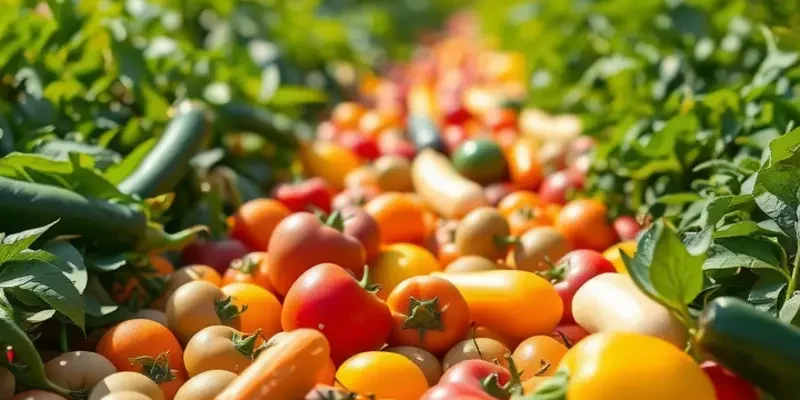Exploring alternatives to sweet spices can open up new flavor dimensions in your cooking. Whether you’re avoiding certain ingredients for dietary reasons or simply want to elevate your dishes, understanding available substitutes can make a significant difference. This guide will help you navigate through common sweet spice alternatives that everyone can embrace, ensuring that your meals remain delicious and satisfying.
Sugar Substitutes: Natural and Healthy Options

Exploring alternatives to traditional sweet spices such as cinnamon and nutmeg opens a world of flavors. Natural sugar substitutes offer a flavorful and health-conscious way to sweeten dishes while satisfying your taste buds.
Maple syrup is an excellent option. Its deep, rich flavor adds complexity, making it a versatile substitute for sweet spices in both baking and cooking. When using maple syrup in recipes, consider reducing other liquids to maintain the right consistency. It matches well with items like oats, sweet potatoes, and various baked goods, providing an earthy sweetness.
For those looking to cut back on sugar, stevia presents a zero-calorie alternative. This plant-based sweetener is much sweeter than sugar, so use it sparingly. Stevia works best in beverages, desserts, and when sweetening sauces. Adjust recipes accordingly by trial and error to find the right balance without adding a metallic taste, which can come across if overused.
Another versatile substitute is honey. It brings both sweetness and a hint of floral notes. Honey pairs marvelously with fruits, yogurt, and glazed vegetables. For a tender crumb in baking, use honey as a one-to-one substitute, but for each cup of honey, reduce other liquids by a quarter. Honey is also an excellent glaze for meats, enhancing the dish with a sweet coating.
Coconut sugar offers a caramel-like depth, derived from the sap of coconut palms. It’s often less processed than commercial sugars, retaining more nutrients. Great for baking, coconut sugar can replace brown sugar directly. Its low melting point makes it suitable for caramelizing dishes such as sauces and custards. This makes it a vibrant option for enhancing flavors naturally.
Date syrup, made by pureeing dates with water, is another exceptional sweetener. Its fiber content and rich nutrients offer added health benefits. Spread this thick syrup on pancakes, mix it into healthy smoothies, or use it in marinades. It provides a natural sweetness without overwhelming the other flavors in your recipes.
To enhance your culinary creations while keeping them nutritious, incorporate these natural sugar substitutes into your diet. Understanding each sweetener’s properties and how they interact with other ingredients will amplify both flavor and health benefits in your dishes. Dive deeper to discover more culinary hacks at cooking without gums and conquer the kitchen with confidence.
Creative Spice Blends: Flavor Boosters for Any Dish

Transforming a savory dish into a culinary masterpiece requires more than just the basic ingredients. A well-crafted spice blend can elevate flavors without the addition of sweetness. Creating your own blends is an art that enhances the depth of a dish while ensuring a harmonious balance.
One of the key benefits of making your own spice blends is control over the ingredients. By blending spices at home, you can tailor the flavor profile to suit your personal tastes and dietary needs. For instance, a Mediterranean blend of dried rosemary, thyme, oregano, and savory can provide a robust flavor without overwhelming sweetness. This combination works wonderfully with roasted vegetables or grilled meats.
A staple in creative cooking is the use of herbs to complement spices. Consider a fusion blend like chili-lime. Start with chili powder, a touch of cayenne, lime zest, and a hint of smoked paprika. This blend brings a spicy citrus kick to dishes like grilled chicken or roasted corn, making them pop with flavor.
For those seeking a blend that offers warmth and complexity, a combination of coriander, cumin, ginger, and turmeric can be quite effective. This mix, often used in Middle Eastern cuisine, can add an exotic touch to soups and stews. The earthy, aromatic spices create a rich, satisfying depth without relying on sweet spices.
When crafting your blends, keep in mind how to balance strong and mild flavors. Fennel seeds, with their subtle licorice taste, can soften the heat of black pepper or chili flakes. This contrast makes for a versatile spice mix perfect for seasoning seafood or pork dishes.
Incorporation of these blends into daily cooking can be seamless with some useful tips. Always taste as you cook; adding spices incrementally helps avoid overpowering the dish. Additionally, store homemade blends in airtight containers away from heat and light to preserve their potency. Investing time in creating these blends can also align with low-waste cooking practices. This concept often translates into minimizing waste by using spices before they lose their flavor, as explained here.
Finally, don’t hesitate to experiment. Some of the best blends come from unexpected pairings. A dash of aniseed with basil or a sprinkle of cardamom over roasted vegetables can unlock new flavor dimensions. As you build your confidence with these blends, your culinary ventures will start to reflect the nuances and expertise that come with the art of spice mixing.
Final words
Navigating sweet spice alternatives allows home cooks to diversify their culinary repertoire while remaining mindful of dietary needs. By substituting sweet spices with natural alternatives and creative blends, you can enhance the flavor of your dishes without compromising health. Embrace these alternatives, experiment with flavors, and enjoy the journey of cooking that brings taste, nutrition, and excitement to your table. Remember, each ingredient has its unique essence—find what works best for you!







